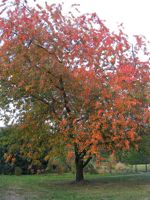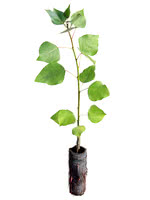Mon-Fri 9am - 5pm Mountain time
Black Cherry vs Quebec Poplar
Prunus serotina
Populus x P38P38
NOT AVAILABLE THIS SEASON - MIGHT RETURN
CUSTOM GROW
Black Cherry is common in eastern North America but a rare find elsewhere. This tree is shade tolerant and is often found in old fields, forest openings, and along fencerows.
The fruit is edible and is commonly used to flavor rum and brandy. It is also edible and often eaten fresh or used in wine or jelly. Black Cherry trees typically begin producing fruit when they are 10 years of age.
Black Cherry wood is a rich reddish-brown color and is strong, making it valued in cabinetry and woodworking. It is often used in reclamation as well.
The leaves can poison livestock as they contain cyanide derivatives and precursors. However, many have noted that deer still seem to browse their trees with impunity and birds and other animals eat the fruit when available.
A hybrid of Simon's Poplar and Balsam Poplar, Quebec Poplar is a fast-growing deciduous tree. This particular selection was one of the finalists for the Quebec Ministry of Forest's Hybrid Poplar breeding program.
It is useful for quickly establishing a privacy screen or as part of a shelterbelt, and prefers moist soil. Disease resistance is likely high as is cold hardiness.
Quebec is a province with a strong forestry sector and we are excited to be offering this variety.
Black Cherry Quick Facts
Quebec Poplar Quick Facts
Toxicity: bark and wilted leaves toxic to livestock

